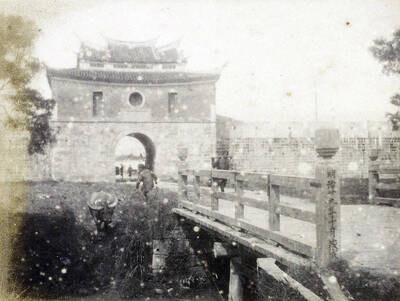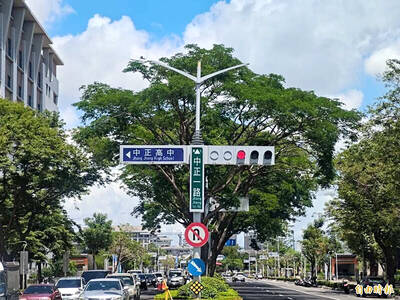Ride the rails in style aboard the Oriental Beauty Express (東方美人號), Taiwan's newly inaugurated tourist train with an Aboriginal motif.
Taiwan's East Coast Rift Valley (
These locales and much more are now connected by the Oriental Beauty Express, a new passenger train christened last month that runs along the East Coast. The train sports a playful theme, with Aboriginal decorations and attendants dressed in traditional Aboriginal attire. Passengers can enjoy splendid coastline views and superior service and furnishings in both economy and business class cars. Clowns perform magic shows and skits for the younger passengers (and the young at heart) on the weekends, making a ride on this locomotive all-round family entertainment.
So where could the Oriental Beauty Express take you?
A pleasant trip could begin with a stop in Jiusui Township at the Butterfly Valley Resort (
Each villa and cabin is equipped with its own hot spring pool. There are also Japanese-style suites and communal hot spring baths. Outside, scenic hiking paths lead off into the forest.
Chugging north along the East Coast railroad from Jiusui will bring you to Kuangfu in short order. The township's wetlands and Amis (
The manmade, waist-high fish ponds are layered with bamboo screens; different layers are devoted to farming various types of aquatic animal. Catfish and eels inhabit the very bottom of the pools; shrimp swim in the middle layer; and faster, friskier fish cruise the top level. The ponds are designed to attract the wetlands' diverse aquatic life, and make harvesting the bounty a piece of cake.
The Kuangfu Sugar Factory (光復糖廠) offers comfortable, affordable accommodation near Kuangfu train station. The building was once a dormitory attached to a sugar factory; it was later converted into a charming hotel after Taiwan's sugar industry went into decline. The workers' rooms have been redone as suites, and are a good place to rest after a day on the town.
Further north on the railway is Shoufeng Township (
Shoufeng also has a picturesque vanilla flower nursery. Additionally, the nursery cultivates lavender flowers, tulips, sunflowers, and lilies at various times of the year. The 10-hectare park also has a teahouse and a small horse farm.
Whether traveling to Juisui, Kuangfu, Shoufeng, or other scenic spots on the East Coast, let the Oriental Beauty Express take you in style.

June 9 to June 15 A photo of two men riding trendy high-wheel Penny-Farthing bicycles past a Qing Dynasty gate aptly captures the essence of Taipei in 1897 — a newly colonized city on the cusp of great change. The Japanese began making significant modifications to the cityscape in 1899, tearing down Qing-era structures, widening boulevards and installing Western-style infrastructure and buildings. The photographer, Minosuke Imamura, only spent a year in Taiwan as a cartographer for the governor-general’s office, but he left behind a treasure trove of 130 images showing life at the onset of Japanese rule, spanning July 1897 to

One of the most important gripes that Taiwanese have about the Democratic Progressive Party (DPP) is that it has failed to deliver concretely on higher wages, housing prices and other bread-and-butter issues. The parallel complaint is that the DPP cares only about glamor issues, such as removing markers of Chinese Nationalist Party (KMT) colonialism by renaming them, or what the KMT codes as “de-Sinification.” Once again, as a critical election looms, the DPP is presenting evidence for that charge. The KMT was quick to jump on the recent proposal of the Ministry of the Interior (MOI) to rename roads that symbolize

On the evening of June 1, Control Yuan Secretary-General Lee Chun-yi (李俊俋) apologized and resigned in disgrace. His crime was instructing his driver to use a Control Yuan vehicle to transport his dog to a pet grooming salon. The Control Yuan is the government branch that investigates, audits and impeaches government officials for, among other things, misuse of government funds, so his misuse of a government vehicle was highly inappropriate. If this story were told to anyone living in the golden era of swaggering gangsters, flashy nouveau riche businessmen, and corrupt “black gold” politics of the 1980s and 1990s, they would have laughed.

In an interview posted online by United Daily News (UDN) on May 26, current Chinese Nationalist Party (KMT) Chairman Eric Chu (朱立倫) was asked about Taichung Mayor Lu Shiow-yen (盧秀燕) replacing him as party chair. Though not yet officially running, by the customs of Taiwan politics, Lu has been signalling she is both running for party chair and to be the party’s 2028 presidential candidate. She told an international media outlet that she was considering a run. She also gave a speech in Keelung on national priorities and foreign affairs. For details, see the May 23 edition of this column,